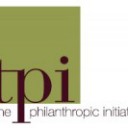It was big news in Boston. Even the New York Times gave it front-page coverage. After 16 years of fruitless pursuit, the FBI had finally nabbed Whitey Bulger – famed mob boss, murderer and FBI informant – and his girlfriend at the apartment where they had been living for 15 years.
So what does this have to do with philanthropy? Directly, not much. No philanthropy contributed to or will result from the capture. One 81-year-old has-been mob boss is gone, but I doubt our society is any safer for it.
The connection to philanthropy lies, I suggest, in the lessons learned from the capture. For 16 years, the premier crime fighting organization in the world could not capture this guy and his girlfriend. Huge amounts of money and manpower were devoted to this 16-year effort and yet, as of a few days before their capture, local, state and federal law enforcement had no idea where he was and in fact assumed he’d been on the move constantly over the years. It was only when somebody had the bright idea of tackling the challenge from a totally different point of view and with a different set of tools that they had the breakthrough. Instead of looking for Whitey, they decided to focus on his girlfriend, Catherine, who they knew was more sociable and likely to interact with other people. Instead of working under the dark of night with informants, they put ads on daytime TV and did some crowdsourcing. Over 200 tips came in based on those ads, and one of them led the FBI to their target within 24 hours of airing the ads.
Let’s see, can anyone think of another social problem we face where experts have been using the same approach for 15 years and yielded little or no results? And then fresh idea and a novel approach, often building on the power of community and crowds, producing unimaginable positive results?
I can think of an example from the Heath brothers’ book Switch, including Paul Butler, a young guy in St Lucia who took on the discouraging task of land conservation and the preservation of an endangered parrot in a country where the opportunity to farm the land and feed more children looked a whole lot more attractive. The persistent social entrepreneur started a campaign to link the parrot to the collective identity of island culture. And it worked. Not only was the parrot saved, but Butler’s campaign has since been replicated all around the world.
Another example is the American Legacy Foundation’s truth® campaign. Launched in 2000, truth® is the largest national youth smoking prevention campaign in history and research shows it’s working – a 2009 study by the American Journal of Preventative Medicine found that at the beginning of the truth® campaign, between 2000 and 2004, approximately 450,000 fewer young adults initiated smoking nationwide. But the negative health effects of smoking were known well before 2000. What did truth® do that previous campaigns didn’t? It changed its approach and went after a new target audience. The campaign focuses on adolescents between the ages of 12 and 17 and not only tailors their ads to that age group but also involves them in the process.
There are a lot of instances – even in philanthropy – where a fresh, new approach can yield surprising and exciting results. And, though ideally those changes take less than 16 years to come to fruition, they’re better late than never.
Ellen Remmer is president and CEO of The Philanthropic Intitiative







Comments (0)